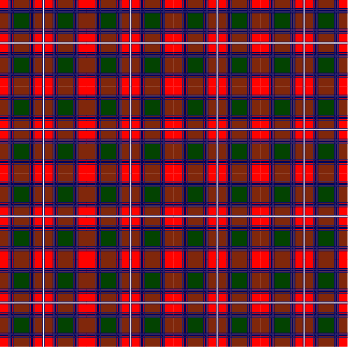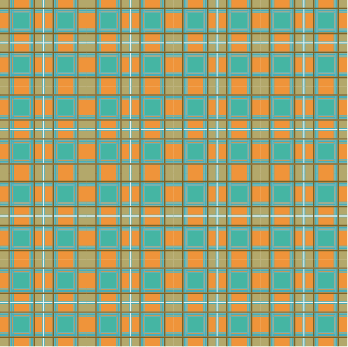
Origins
The name Rattray was taken from a Feudal Barony in the county of Perthshire. The name is Gaelic “rath” meaning “fortress” and the Brythonic “tref” meaning “settlement”. Surnames became an important part of an individual’s identity for taxation. Read about Rattray’s early history, royal connections, more about the name Rattray, visit Rattray lands via map, the clan chief and septs (branches of Rattray), the tartans, and the castle by viewing the tabs to the right and learn about the Rattray Parish Church. You can find many other sources that discuss Rattray’s history.
All About Kilts
Early History
It is assumed that King Malcolm Canmore confirmed the first Laird of Rattray sometime in the 11th century. The first was Alanus de Ratheriff, who lived during 1165-1210. There is a Church of Rattray where either stones or plaques exist to mark the graves of deceased Rattray Lairds. It is in Blairgowrie near Rattray. Earlier markers are damaged or missing.
Royal Connections
Sir Silvester Rattray (1426-1491) was the 4th great grandson of Robert the Bruce, King of Scots (1306-1329).
The Name Rattray
There are different derivatives of the name of Rattray that include: Rathtreff, Rotref, Ratref, Rothtref, Rattra all from the 11th century. The name Rattray derives from two elements; Rath, (Brythonic and early Gaelic) meaning a circular fortification, and Tref (Brythonic) meaning settlement. The two elements combining to mean a circular fortified settlement.” (cf. Taylor, Iain. Place-names of Scotland)
The Clan Lands
You can view the Rattray lands of old in Scotland under D3 and D4 on the map.
The Clan Chiefs and Septs
Chiefs
Clan Rattray has had 30 chiefs, with the current one being Chief Alexander Rattray of Rattray, 30th Clan Rattray Chief. The Clan Chief is automatically invited to any Clan events. The running of the Clan Society is the duty of the Chairman and its Officers. You can become a member of the global Clan Rattray Society as well as the Rattray Clan Association of the US and Canada. The global society is based in Scotland and has a gathering every 4 years for Rattrays around the globe. You can learn more about the global society and Rattray events in Scotland by visiting their website:
www.clanrattray.com.
The Septs of Clan Rattray include:
- Brewlands
- Craighall
- Dalrulzian
- Kirkmichael
- Kinvead
- Moneydie
- Persie
- Rannagulzion
Variations in spelling include: Rattreif, Rattrie, Ratray, Ratre, Ratteray, Ratteree, Ratterree, Rattray, Retrey, Rettrey, Rettra, Rettray, and Rotray.
Tartans
The tartan is a plaid pattern for which there are many thoughts as to when the tartan dates back to ranging from 3000 BC to 500 years old. The tartan has had a turbulent history prior to becoming a prominent feature in Scottish society.
The Rattray tartan (plaid) consists of forest green, navy blue, black, crimson, white, and gold. This plaid was worn by individuals in the Scottish military, the renowned Black Watch regiment.
There are two distinct Rattray tartans. The Ancient tartan has lighter, softer, earthier setts, and the Modern tartan has stronger, darker colors. (cap both Ancient and Modern)
In 2008, the Scottish established the Scottish Register of Tartans to promote and protect the cultural history of the designs and to provide a database for research. Today, tartans are worn during festivals and events.
The Scottish Register of Tartans:
STA ref: 3399
STWR ref: None
Designer: Not specified
Tartan Date: 01/01/1825
Registration Date: This tartan was recorded prior to the launch of The Scottish Register of Tartans.
Category: Clan/Family
Restrictions: N/A
Registration Notes: Jamie Scarlett MBE dates this to c. 1825 whicb therefore puts it into the Wilsons period. Sindex alternatively names this as Rattray of Lude (#1096, original Scottish Tartans Authority reference).
To learn more about tartans, read:


Left/Top: A glimpse of the Rattray modern tartan.
Right/Bottom: An exciting look at the Rattray ancient tartan.
Castle and Coat of Arms
The earliest castle, “Castle Hill,” was a built on a large green mound southeast of Rattray by Alanus de Rattray in 1170. It was a quarter of a mile long and had a chapel below it. The Rattray Arms are a shield, three crosses of Jerusalem, two serpents, a crest, mullet, and a heart. Rattrays took part in the Crusades, which is why there were three crosses. During the upheaval following the Battle of Flodden (1513) and subsequent predations by the Murrays of Atholl, the family abandoned the mound site, and Craighall Rattray Castle was then built in about 1650. On March 30, 2010, for financial reasons, Chief Lachlan Rattray sold the castle to a London Investment Banker. After 20 generations, the Rattrays no longer held their castle.
For a fun and interesting history of the Rattray family seat: Craighall Rattray Castle, please visit: Kyleslife.org.
Scottish Flag
The Saltire is the national flag of Scotland and has a diagonal cross on a blue background. Sometimes the background is a lighter blue and sometimes a darker blue. The cross represents the crucifixion of the apostle St Andrew. St Andrew is the patron saint of Scotland. It is believed that the Scottish flag could be the oldest in Europe.
An army of Picts and Socts under King Angus invaded the Lothians, and found itself surrounded by a larger force of Saxons. Fearing the outcome, King Angus led prayers for deliverance and was rewarded by seeing a cloud formation of a white Saltire against the blue sky The king vowed that if, with the saint’s help, he gained victory, then Andrew would thereafter be known as the patron saint of Scotland. The Scots did win, and the Saltire eventually became the flag of Scotland.
Discover “The History Behind Scotland’s Flags” from The Scotsman.



